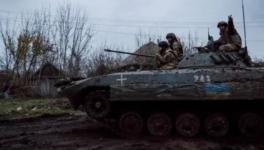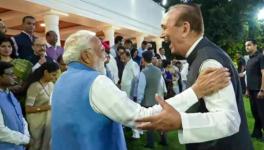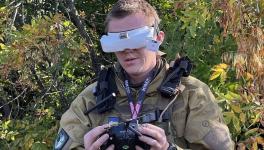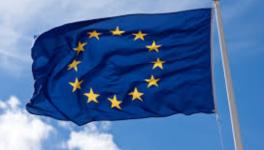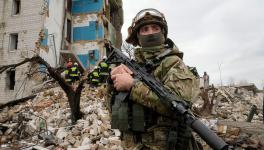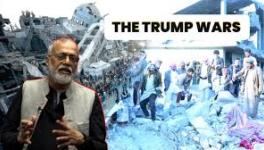Russia’s Kherson Withdrawal is Tactical
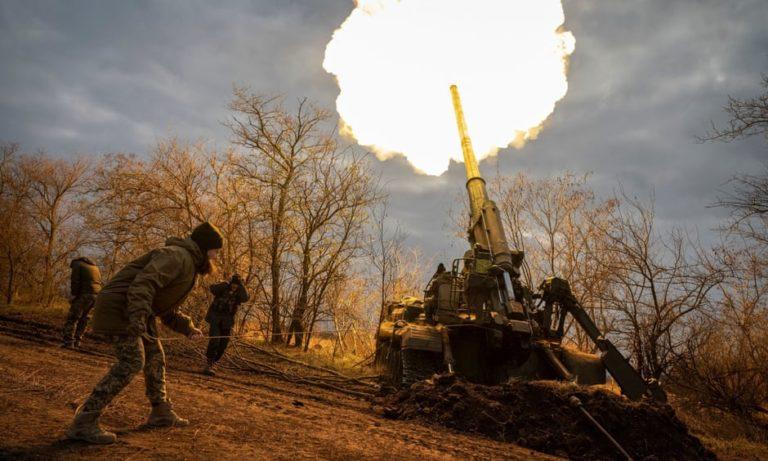
Ukrainian frontline in the Kherson region
General Mark Milley, Chairman Joint Chiefs of Staff of the United States, assessed that it would take several weeks for Moscow to complete the evacuation of some 30,000 Russian troops deployed in Kherson city in southern Ukraine. But Russians have announced that the evacuation was successfully completed in two days — both soldiers and over 5,000 pieces of heavy equipment.
Evidently, much advance planning went into the execution of the evacuation order. The Russian military command began working on the evacuation weeks ahead of the actual announcement earlier this week.
In retrospect, General Sergei Surovikin’s extraordinary interview on October 18 soon after his appointment as the first theatre commander for Ukraine operations only eight days earlier, was probably choreographed to sensitise public opinion about the criticality of the military situation in the Kherson region.
The following excerpts from the interview are relevant here:
“A difficult situation has arisen. The enemy deliberately bombards infrastructure and residential buildings in Kherson. The Antonovsky Bridge and the dam of the Kakhovskaya hydroelectric power station were damaged by HIMARS missiles, traffic there was stopped.
“As a result, the supply of food in the city is difficult, there are certain problems with the water and electricity supply. All this greatly complicates the lives of citizens, but also poses a direct threat to their lives.
“The NATO leadership of the Ukrainian armed forces has long been demanding offensive operations against Kherson from the Kiev regime, regardless of casualties – both among the armed forces themselves and among the civilian population.
“We have data on the possibility that the regime in Kiev will use prohibited methods of war in the area of the city of Kherson, on Kiev’s preparation for a massive missile attack on the Kakhovskaya hydroelectric dam, the conduct of massive missile and artillery attacks on the city without distinction.
“These actions can lead to the destruction of the infrastructure of a major industrial centre and to civilian casualties.
“In these circumstances, our top priority is to preserve the life and health of citizens. Therefore, the Russian army will first of all ensure the safe, already announced departure of the population according to the resettlement program being prepared by the Russian government.
“Our further plans and actions regarding the city of Kherson itself will depend on the current military-tactical situation. I repeat, it is already very difficult today.
“In any case, as I said, we will start from the need to protect the lives of civilians and our military as much as possible.
“We will act consciously and in a timely manner, without excluding difficult decisions.” [Emphasis added.]
Three things can be said. First, the retreat from Kherson was decided for operational reasons. Its rationale is to pre-empt any attempt by the Ukrainian forces and foreign mercenaries from disrupting the work on progress to induct trained military personnel in large numbers (totalling close to 400,000 troops including volunteers) to augment the deployments in Ukraine.
Two, Kremlin took extra care to make a ‘soft landing’ for the bitter decision to vacate Kherson city, which is etched in Russian national psyche as part of the historical legacy of Catherine the Great. Interestingly, the historical relics of Imperial Russia in Kherson city have been meticulously mothballed and taken away for safe storage.
The Russian public has largely accepted the decision by the military command, including the ‘hardliners’ in the. Establishment such as the Chechen leader Ramzan Kadyrov and the Wagner Group of Russian military contractors. This wasn’t the case in the withdrawal in Kharkov in September.
Three, most important, the intention is to forestall any threat to Crimea in terms of its security, communication, water, etc. The retreating Russian forces have destroyed two big segments of the Antonivka bridge connecting Kherson city with the east bank of Dnieper. Dnieper de facto becomes the ‘buffer zone’ in the Kherson region with 60% of the oblast’s territory under Russian control.
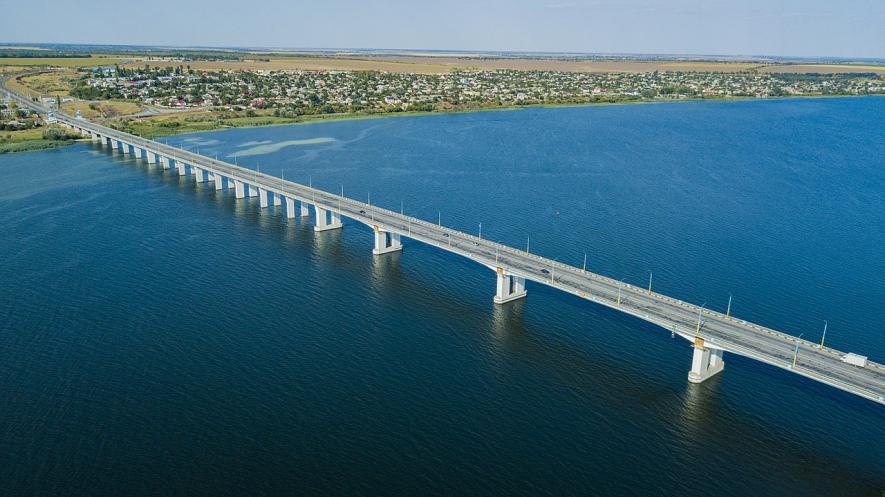
Antonovka Bridge across the Dnieper River, Kherson
Going forward, first and foremost, this is a tactical withdrawal. The Kremlin spokesman Dmitry Peskov has asserted that Kherson remains a part of Russia. That implies an obligation to recover Kherson city, as the special military operations continue.
Second, the Russian military command is not contemplating any operation toward Odessa in a near term. The priority will be to complete the operation to establish full control of the Donbass region (which was the initial objective of the special operation) as well as Zaporozhye region (which is important for the security of the land bridge connecting Crimea with the Russian hinterland.) Intense fighting is continuing in Donetsk.
Third, to be sure, there are incipient signs of a shift in the thinking within the Biden Administration towards dialogue and negotiations. How authentic they are, remains unclear. (See my blogs No end in view for Ukraine war, November 10, and Biden nods to compromise in Ukraine, November 11.)
According to the CNN and New York Times, the Biden Administration is a divided house. The indications suggest that the Pentagon is pushing for negotiations. According to CNN, Gen. Milley, chairman Joint Chiefs of Staff holds the view that time is ripe for a diplomatic solution as fighting heads toward a winter lull, while secretary of state Antony Blinken and National Security Advisor Jake Sullivan, both ardent neocons, remain sceptical.
Russians largely keep their thoughts to themselves but some signalling is also going on. Russian Ambassador to Washington Anatoly Antonov said in an interview with Izvestia, published on Friday, that “I find it naive to assume, judging from media leaks only, that any transformation in approaches toward putting Russian-US relations on a new track is underway. Our relationship is facing a deep crisis, and there is no light at the end of the tunnel yet.”
Deputy Foreign Minister Sergey Ryabkov said on Friday no meetings are planned at the foreign minister level between Russia and the US on the sidelines of the G20 at Bali. Peskov said on Friday that “The conflict in Ukraine can be ended after achieving its (special military operation’s) goals or by means of achieving the same goals through peaceful negotiations, which is also possible. Kiev does not want negotiations. The special military operation continues.”
In the Russian eyes, how far the Biden Administration is willing to pressure Kiev is the moot point. Ryabkov addressed this crucial aspect in comments yesterday: “I can reiterate that we are open to dialogue without any preconditions. And we have been ready for some time. On instructions from its Western patrons, Kiev broke off the dialogue which in general was progressing, and a certain document was in the works. Now these are things of the past. And what comes next no longer depends on us.
“I can certainly share my opinion here that if Kiev is given an order from certain capitals, there would perhaps be a better chance for such dialogue. But then again, we do not have any obstacles over here and there should be no preconditions for dialogue.”
The big question is whether the Russian offensive, which is expected to begin in November-December, will go ahead or not. As a CNN analysis concluded, “Success in Kherson may also allow exhausted Ukrainian units some respite… But Russia has plenty of weaponry and tens of thousands of newly mobilised troops to send into battle, and its campaign against Ukrainian infrastructure has left power and water supplies hanging by a thread in many regions. Ukraine is slowly receiving advanced air defences from Western donors but has a huge area to defend.”
Get the latest reports & analysis with people's perspective on Protests, movements & deep analytical videos, discussions of the current affairs in your Telegram app. Subscribe to NewsClick's Telegram channel & get Real-Time updates on stories, as they get published on our website.











